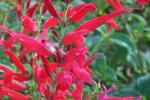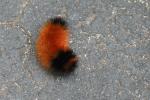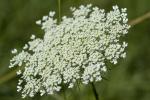Magazine
Visiting the Blue Ridge Mountains of WNC isn’t complete without a visit to the beautiful - Biltmore Estate and what better way to enjoy Fall than experiencing this remarkable house. The temperatures are cooling but the blaze of color is just getting heated up. You still have time to take advantage of the many activities to do while on the estate.
Pineapple sage is one of my favorite herbs all year round, but in the fall, she shows her beautiful autumn display, joining the many other breathtaking displays that nature has to offer!
Pineapple sage (Salvia elegans) is a fragrant flowering plant native to Mexico and Guatemala, where it grows naturally in the forests of oaks and pine trees. Here in the Appalachians, it is only an annual plant because it cannot tolerate the cold.
Typical sports that you consider of when you think of the mountains may include: hiking, mountain biking and white water rafting. But scuba diving? No, really. Although the Appalachian Mountains are miles from any deep seas, there is one place in the midst of the Blue Ridge Mountain range where you can learn the sport and even enjoy a day of scuba diving.
Surprises Beneath a South Carolina Lake
Queen Anne’s Lace is a flower found all over the Appalachians. You’ll see them driving to work along the roadsides and in your neighbor’s flower gardens. Queen Anne’s Lace, also called “Wild Carrot,” is a common plant found abundantly in dry fields, ditches, and open areas. The crocheted doily-looking plant was first introduced into the U.S. from Europe. The carrots you eat today once were cultivated from this plant.
But the Queen has her downside. She harbors tiny pests called chiggers.
Pesky Little Pests
- ‹ previous
- 20 of 21
- next ›



3af1.jpg?itok=7w-hdrfG)




